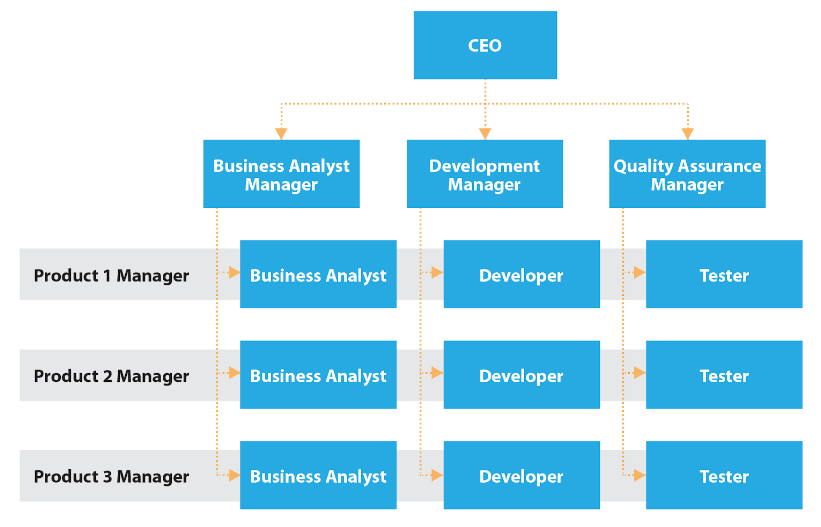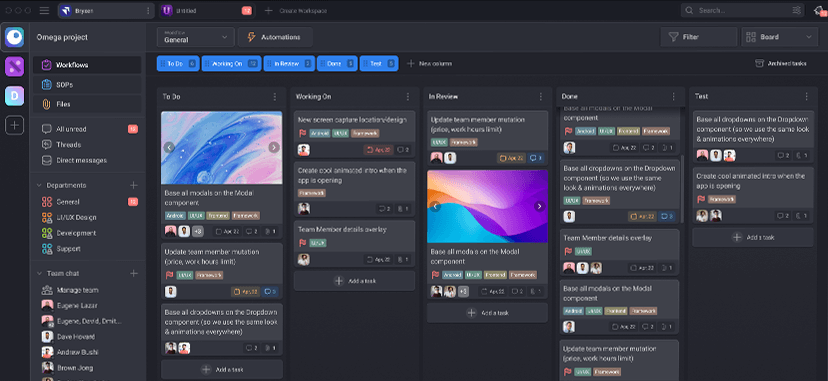Picture this: you’re a busy entrepreneur or a savvy marketer juggling a multitude of tasks. In the midst of it all, you realize your blog is starving for fresh, high-quality content.
Don’t worry, you’re not alone—countless others have faced the same challenge. The good news? Hiring a content writer might just be the secret ingredient to take your blog from bland to brilliant!

The Importance of Hiring a Content Writer for Your Blog
Hiring a content writer for your blog is a no-brainer, especially when you consider all the benefits you’ll derive from it, such as:
Enhancing your blog’s quality and consistency
A talented content writer is like a magician, capable of transforming simple words into a captivating story that keeps readers hooked. By hiring a skilled writer, you’re investing in the quality of your blog. These wordsmiths will craft well-researched, engaging, and relevant content that resonates with your audience.
Consistency is another superpower of a professional content writer. You know the saying, “Content is king,” but consistency is its queen! An experienced writer can churn out top-notch content on a regular basis, ensuring your blog remains fresh and up-to-date. This consistency is essential for building trust with your audience and keeping them coming back for more.
Saving time and resources
Let’s face it: writing can be time-consuming and downright exhausting. Just think of all those hours spent researching, drafting, editing, and proofreading—it’s enough to make anyone’s head spin!
By hiring a content writer, you’re effectively outsourcing this demanding task to an expert. This frees up your valuable time and energy to focus on other important aspects of your business, like strategizing, networking, and, you know, actually running it.
Moreover, a skilled writer will often require less time and effort to create high-quality content, as they’ve honed their craft over countless writing projects. Think of it as a well-oiled content-producing machine that saves you time and resources in the long run.
Increasing audience engagement
In today’s digital age, your blog is a powerful tool for connecting with your audience. A skilled content writer knows how to create content that not only informs and entertains but also engages readers on a deeper level. They have a knack for striking the perfect balance between delivering valuable information and crafting an emotional connection with readers.
By hiring a content writer, you’re investing in content that encourages readers to comment, share, and engage with your brand. This increased engagement can lead to a loyal following, higher conversion rates, and, ultimately, more revenue for your business. So, it’s not just about putting words on a page—it’s about building relationships and fostering a sense of community around your blog.
In conclusion, hiring a content writer for your blog is like adding a secret weapon to your arsenal. With their ability to enhance the quality and consistency of your content, save you precious time and resources, and boost audience engagement, it’s no wonder that smart entrepreneurs and marketers are turning to professional writers to elevate their blogs.
Now that you’re convinced of the importance of hiring a writer, let’s dive into the nitty-gritty of finding the perfect wordsmith for your blog’s needs. Hold on tight—this is where the magic happens!

Understanding the Different Types of Writers
Welcome to the wonderful world of writers! Just like the animal kingdom, the writing ecosystem is vast, diverse, and teeming with unique species, each with their own special talents.
Before embarking on your quest to find the perfect writer, it’s crucial to understand the different types of writers and their specific skills. So, let’s set out on a writing safari and explore the most common writer species in their natural habitats.
Content writers
The content writer is like the chameleon of the writing world, able to blend seamlessly into any environment. These adaptable creatures are skilled in producing a wide range of content, from blog posts and articles to social media updates and email newsletters. They’re masters of storytelling, crafting engaging narratives that resonate with your target audience.
Content writers are also particularly adept at using SEO techniques to boost your blog’s visibility in search engine results. They understand the importance of keywords, headings, and meta descriptions, and can expertly weave them into their writing without sacrificing quality or readability.
In short, content writers are the backbone of any successful content marketing strategy.
Freelance writers
Freelance writers are the nomads of the writing kingdom, free to roam from project to project, picking up new skills and experiences along the way. They’re essentially self-employed wordsmiths with varying proficiencies, depending on their individual experiences and strengths.
While some freelancers excel in blogging and social media posts, others may have a diverse range of skills, such as technical writing, copywriting, or ghostwriting. Their varied skill sets offer a rich palette of expertise to draw from, ensuring that you can find the perfect match for your unique content needs.
Hiring a freelance writer offers several advantages. They can provide a fresh perspective to your content, bring unique expertise to the table, and allow for greater flexibility in terms of workload and deadlines.
However, keep in mind that managing a freelance writer may require more oversight and communication than working with an in-house writer.
Technical writers
Ah, the elusive technical writer—these rare creatures possess a unique set of skills that allow them to translate complex information into digestible, easy-to-understand content. They’re experts at creating user manuals, how-to guides, and technical documentation for a wide range of industries, including software, engineering, and pharmaceuticals.
If your blog focuses on a specialized field or requires content with a high level of technical knowledge, a technical writer might be your best bet. Just be prepared to invest in their specialized expertise, as these sought-after specialists often command higher rates than other types of writers.
Copywriters
The copywriter is the peacock of the writing world, using their words to create eye-catching, persuasive content that sells. These writers specialize in crafting advertising copy, product descriptions, and sales materials that entice your audience to take action—whether that’s making a purchase, signing up for a newsletter, or sharing your content on social media.
If you’re looking to boost your blog’s conversion rates and generate more revenue, a skilled copywriter can be worth their weight in gold. Just be sure to find one who understands your brand’s voice and values, as well as the art of crafting compelling calls to action.
Ghostwriters
Ghostwriters are the ninjas of the writing realm—silent, stealthy, and often invisible. These mysterious wordsmiths write content on behalf of someone else, allowing the “author” to take all the credit (and the byline). Ghostwriters can work on a wide variety of projects, from blog posts and articles to books and speeches.
If you’re looking for high-quality content without the time or inclination to write it yourself, a ghostwriter might be the perfect solution. They’ll do all the heavy lifting behind the scenes, leaving you free to bask in the spotlight and enjoy the fruits of their labor.
Now that you’re familiar with the different types of writers and their unique skills, it’s time to embark on the next leg of your journey: defining your needs and finding the perfect writer for your blog.
By understanding the specific strengths of each writer species, you’ll be better equipped to identify the right candidate and set your blog up for success.
So, buckle up, and let’s venture deeper into the wild world of hiring writers!

How to Hire Writers Defining Your Needs
Before you can embark on the thrilling adventure of finding the perfect writer, you must first chart your course by defining your needs. This essential pre-hiring process is like preparing for a treasure hunt—you need a clear map, a solid understanding of the terrain, and a trusty compass to guide your way.
So, grab your adventurer’s hat, and let’s delve into the essential steps of defining your writing project.
Determining the scope of your project
First and foremost, you’ll need to outline the scope of your writing project. This means getting crystal-clear on the specifics, such as the types of content you require, the desired length of each piece, and the frequency of publication. By defining the scope, you’re setting boundaries for your writer, ensuring they know exactly what’s expected of them.
Consider the following questions when determining the scope of your project:
- What types of content do you need (e.g., blog posts, articles, email newsletters, social media updates)?
- How long should each piece of content be?
- How often do you want new content to be published?
- Are there specific topics or themes you want the writer to cover?
- Will the writer be responsible for additional tasks, such as keyword research, image sourcing, or social media promotion?
Identifying your target audience
In the wild world of content creation, your target audience is like the North Star, guiding your writer’s every move. To create content that resonates with your readers, your writer must have a deep understanding of who they are, what they care about, and what problems they’re trying to solve.
When identifying your target audience, consider the following:
- What are the demographics of your ideal reader (e.g., age, gender, location, income)?
- What interests, hobbies, or passions do they have?
- What challenges or pain points are they facing?
- What types of content do they enjoy and engage with?
- What tone and writing style will resonate most with your audience?
By providing your writer with a clear picture of your target audience, you’re equipping them with the tools they need to create content that truly connects with your readers.
Establishing your content goals
Next up on your treasure map is defining your content goals. What do you hope to achieve with your blog? Are you looking to increase brand awareness, generate leads, or establish yourself as an industry expert?
Your content goals will directly influence the type of writer you need, as well as the topics and themes they should cover.
Consider the following when establishing your content goals:
- What are the primary objectives of your blog?
- How will you measure the success of your content (e.g., page views, social shares, conversions)?
- What specific topics or themes will help you achieve your goals?
- How can your writer contribute to these goals through their content?
Setting a budget for hiring a writer
Last but not least, you’ll need to establish a budget for hiring a writer. Like any intrepid explorer, you must be prepared to invest in the right tools and resources to ensure a successful journey. Keep in mind that quality writing often comes at a cost, and it’s crucial to find a balance between affordability and expertise.
When setting a budget for hiring a writer, consider the following:
- What is your overall content budget, and how much can you allocate to hiring a writer?
- Are you looking for a one-time collaboration, or do you need an ongoing writing relationship?
- What is the industry-standard rate for the type of writer you need?
- Are you willing to offer incentives or bonuses for exceptional work or meeting specific targets?
With your treasure map complete and your course charted, you’re now ready to embark on the exciting journey of finding the perfect writer for your blog. Armed with a clear understanding of your project’s scope, target audience, content goals, and budget, you’ll be well-equipped to navigate the wild terrain of the writing world and uncover the hidden gems that will take your blog to new heights.
So, gather your courage, hoist your flag, and set sail into the uncharted waters of hiring writers. With a keen eye for talent, a solid plan, and a dash of adventure, you’re sure to discover the wordsmith who can make your blog shine like the treasure it truly is.

How to Hire Freelance Writers: Crafting the Perfect Job Post
In your quest for the perfect freelance writer, you must first cast a magical spell to summon the mightiest wordsmiths from the farthest reaches of the realm. Alas, we don’t have access to such enchantments, so we’ll have to settle for the next best thing: crafting the perfect job post.
A job post that sings like a siren’s call, beckoning skilled freelancers to your digital shores, is the key to finding the right candidate. So, grab your quill, and let’s embark on the journey of crafting a job post that entices, captivates, and inspires the freelance writing community.
Writing an attention-grabbing headline
In the land of freelance job boards, attention is a rare and precious commodity. To stand out from the crowd, you’ll need a headline that grabs the reader by the lapels and demands their undivided attention. Think of your headline as the title of an epic fantasy novel, full of intrigue, adventure, and promise.
To craft an attention-grabbing headline, consider the following tips:
- Be specific: Clearly state the type of writer you’re looking for (e.g., “Seeking Talented Content Writer for Thriving Lifestyle Blog”).
- Highlight key selling points: Are you offering a competitive rate, ongoing work, or unique perks? Mention them in the headline.
- Keep it concise: Brevity is the soul of wit, so aim for a headline that’s short, punchy, and to the point.
Describing the project and writer’s responsibilities
Now that you’ve lured the reader in with your tantalizing headline, it’s time to paint a vivid picture of the project and the writer’s responsibilities. This is your opportunity to set the stage, describing the grand adventure that awaits the successful candidate.
When describing the project and writer’s responsibilities, be sure to:
- Outline the types of content you need (e.g., blog posts, articles, social media updates).
- Specify the desired length, format, and style of each piece.
- Detail any additional tasks, such as keyword research, image sourcing, or content promotion.
- Provide information on the target audience, content goals, and any specific topics or themes.
Listing desired qualifications and experience
As you continue to weave the tapestry of your job post, it’s important to outline the qualifications and experience you’re looking for in a writer. This helps to separate the seasoned adventurers from the wide-eyed novices, ensuring you attract candidates with the right skills and expertise.
When listing desired qualifications and experience, consider the following:
- Relevant industry or subject matter expertise.
- Proven experience writing similar content.
- A strong portfolio of published work.
- Familiarity with SEO best practices and content marketing strategies.
Setting expectations for deadlines and payment terms
Finally, no job post is complete without clear expectations for deadlines and payment terms. In the world of freelancing, transparency is the foundation of a harmonious and fruitful collaboration.
To set expectations for deadlines and payment terms, be sure to:
- Specify the expected turnaround time for each piece of content.
- Detail your preferred method of communication and any required progress updates.
- Clearly outline your payment terms, including rates and payment schedules.
With your enchanting job post complete, you’re ready to release it into the wild world of Upwork and watch as skilled freelance writers flock to your cause. Be prepared for an influx of eager applicants, each vying for the opportunity to embark on this grand adventure with you.
So, choose wisely, dear explorer, for the success of your blog rests on the shoulders of the writer you select.

How to Hire Writers for Your Blog: Evaluating Writing Samples
Picture yourself as a brave explorer, venturing into the dense jungle of writing talent, machete in hand, determined to uncover the elusive wordsmith who can transform your blog into a content paradise.
But beware, dear adventurer! The jungle is teeming with all manner of creatures, and not all possess the skills you seek. Fear not, for we have the ultimate guide to help you evaluate writing samples and separate the lions from the lemurs.
Requesting writing samples and portfolios
The first step in assessing a writer’s skills is to review their writing samples and portfolios. This treasure trove of past work provides valuable insight into their writing style, versatility, and overall prowess with the written word.
Keep an eye out for the following:
- Relevance: Are their samples related to your industry or the type of content you require?
- Quality: Is their writing well-structured, engaging, and free of errors?
- Voice: Does their writing style align with your brand’s voice and the preferences of your target audience?
Remember, a diverse portfolio is often a sign of a skilled and adaptable writer, so be sure to explore the full range of their work before making a judgment.
Evaluating grammar, style, and creativity
As you delve deeper into the jungle of writing samples, focus on these essential elements:
- Grammar: Is their writing free of spelling, punctuation, and grammatical errors?
- Style: Do they employ an engaging and reader-friendly writing style that aligns with your brand’s voice?
- Creativity: Have they used unique angles, compelling storytelling, or a touch of humor to make their content stand out from the crowd?
Remember, even the most talented writers can make the occasional typo, so don’t be too harsh in your judgment. Instead, focus on their overall ability to captivate and engage your readers.
Assessing research and storytelling abilities
Finally, as you traverse the wilds of evaluating writing samples, be sure to appraise the candidate’s research and storytelling abilities. A great writer knows how to dig for information, separate the gold nuggets from the fool’s gold, and weave them into a captivating narrative.
To assess these skills, look for the following:
- Research: Have they included accurate, relevant, and up-to-date information in their writing?
- Storytelling: Do they use anecdotes, examples, or case studies to bring their content to life and make it more relatable?
- Clarity: Is their writing easy to understand, with a logical flow and a clear focus on the main points?
With your keen eye and intrepid spirit, you’ve successfully navigated the treacherous terrain of evaluating writing samples. Now, it’s time to select the writer who has proven themselves worthy of joining your content expedition.

Conducting Interviews and Selecting the Best Candidate
Ahoy, fellow adventurer! You’ve crafted the perfect job post, summoned a motley crew of potential wordsmiths, and now it’s time for the most thrilling part of the journey: selecting the best candidate to join your content creation quest.
The path ahead may be filled with tough decisions and nail-biting suspense, but fear not! With our trusty guide to conducting interviews and selecting the best candidate, you’ll navigate these treacherous waters with ease.
Preparing thoughtful interview questions
The interview is your chance to delve deep into the mind of each prospective writer, uncovering their hidden talents, secret motivations, and unbridled passion for the written word. To do this, you’ll need a powerful arsenal of thoughtful interview questions that probe, challenge, and inspire.
When preparing interview questions to send via email, consider the following:
- Ask about their experience in your industry or with similar content.
- Inquire about their creative process and how they approach new writing projects.
- Test their knowledge of SEO best practices and content marketing strategies.
- Pose hypothetical scenarios to gauge their problem-solving abilities and adaptability.
Evaluating communication skills and cultural fit through email correspondence
As you venture deeper into the email interview process, remember that a skilled writer is more than just a master of prose. They must also possess exceptional communication skills and be a seamless fit for your blog’s unique culture.
To evaluate communication skills and cultural fit via email, look for the following:
- Responsiveness: Are they prompt in their replies, and do they provide clear, concise answers?
- Active listening: Do they demonstrate a genuine understanding of your questions and concerns?
- Collaboration: Are they open to feedback and willing to work as part of a team?
- Compatibility: Do their values, work style, and personality align with your blog’s culture?
Reading client reviews to evaluate candidates
The quest for the perfect writer is fraught with danger, and even the most promising candidates can harbor hidden pitfalls. To avoid a perilous misstep, be sure to read client reviews on Upwork to verify writers’ past performance and ensure they’re as reliable as they claim.
When reading client reviews, look for:
- Consistency: Do their past clients have similar praise for their work?
- Specific examples: Are there any standout projects or accomplishments mentioned in their reviews?
- Red flags: Keep an eye out for any warning signs or patterns of negative feedback.
- Direct contact: If possible, reach out to their past clients for a more personal and in-depth understanding of their work history.
Negotiating contracts and establishing a trial period
With the interview process complete and your chosen candidate standing victorious, it’s time to negotiate contracts and establish a trial period to ensure a smooth and successful partnership.
When negotiating contracts and establishing a trial period, consider the following:
- Define the scope of work, including content types, lengths, and deadlines.
- Outline your payment terms, including rates and schedules.
- Establish a clear communication plan, including preferred methods and expected response times.
- Set a trial period with a predetermined length and specific goals to assess the writer’s performance.
Once both parties agree on the terms and your trial period is underway, you’ve successfully completed the thrilling adventure of hiring a writer for your blog. Together, you’ll sail the high seas of content creation, forging a bond that transcends the ordinary and elevates your blog to legendary status.

How to Hire Writers for Blog Success: Building Long-Term Relationships
Congratulations, intrepid explorer! You’ve successfully navigated the treacherous terrain of hiring a writer, and now it’s time to embark on the most rewarding phase of your journey: building a long-term relationship that will transform your blog into a beacon of literary brilliance.
Like any epic tale, the story of your partnership must be nurtured, cultivated, and strengthened over time. With our trusty guide to building long-term relationships, you’ll learn the secrets to forging a lasting bond with your writer and ensuring your blog’s success for years to come.
Providing clear guidelines and expectations
In the mystical world of content creation, clarity is the key to unlocking your writer’s full potential. By providing clear guidelines and expectations, you’ll empower them to work their magic, weaving a tapestry of captivating prose that delights your readers and elevates your blog to new heights.
To provide clear guidelines and expectations, be sure to:
- Define the scope of work, including content types, lengths, and deadlines.
- Share your brand’s voice, style guide, and any unique formatting requirements.
- Communicate your content goals, target audience, and desired outcomes.
- Establish a transparent communication plan to ensure a smooth and efficient workflow.
Offering constructive feedback and encouragement
As you traverse the path of content creation, you’ll encounter both triumphs and setbacks. To guide your writer through these challenges, it’s essential to offer constructive feedback and encouragement that fosters growth, resilience, and the pursuit of excellence.
When offering feedback and encouragement, consider the following:
- Be specific: Highlight the aspects of their work that shine, and offer concrete suggestions for improvement where needed.
- Be timely: Provide feedback promptly, allowing your writer to learn from their mistakes and build on their successes.
- Be balanced: Celebrate their achievements and recognize their efforts, while also addressing areas that need improvement.
- Be supportive: Encourage your writer to take risks, experiment with new ideas, and push the boundaries of their craft.
Fostering a collaborative work environment
In the realm of content creation, the most powerful weapon at your disposal is a collaborative work environment that unites your writer’s talents with your own unique vision. By fostering a spirit of teamwork and mutual respect, you’ll create a synergistic partnership that fuels the success of your blog.
To foster a collaborative work environment, be sure to:
- Maintain open lines of communication, inviting your writer to share their ideas and concerns.
- Welcome their input on content strategy, topics, and creative direction.
- Encourage brainstorming sessions, nurturing a spirit of innovation and shared ownership.
- Build trust by showing respect, listening actively, and valuing their expertise.
Recognizing and rewarding exceptional work
In every epic tale, heroes rise to the occasion, achieving feats of greatness that leave their mark on history. To ensure your writer’s story follows a similar arc, it’s crucial to recognize and reward their exceptional work, igniting their passion and inspiring them to reach for the stars.
When recognizing and rewarding exceptional work, consider the following:
- Offer praise and acknowledgment for standout pieces or accomplishments.
- Consider financial incentives, such as bonuses or rate increases, for consistently high-quality work.
- Showcase their achievements on your blog, social media channels, or in team meetings.
- Encourage professional development by offering opportunities for growth, learning, and advancement.
With these secrets to building long-term relationships in hand, you’re ready to set sail on a voyage of blog success that will echo through the ages. Together, you and your writer will navigate the uncharted waters of content creation, united by a shared passion for storytelling, creativity, and the unwavering pursuit of excellence.
As you embark on this grand adventure, you’ll forge a partnership built on trust, collaboration, and mutual respect, empowering both of you to reach new heights in the ever-evolving world of blogging. With each new piece of content, you’ll weave a tapestry of ideas, insights, and inspiration, captivating your audience and leaving a lasting impact on the digital landscape.

Tips for Managing and Retaining Your Writers
As your epic journey with your writer unfolds, the true test of your partnership begins: managing and retaining your wordsmith for the long haul. Like a seasoned captain steering their ship through treacherous seas, you must navigate the challenges of management with skill, wisdom, and a dash of daring.
With our enchanted guide to managing and retaining your writers, you’ll uncover the secrets to maintaining a thriving collaboration that stands the test of time, ensuring your blog’s success for years to come.
Establishing a content calendar and workflow
In the realm of content creation, order and structure are your most steadfast allies. By establishing a content calendar and workflow, you’ll provide your writer with a roadmap to success, guiding their creative journey with purpose and precision.
To establish a content calendar and workflow, be sure to:
- Plan your content strategy in advance, identifying key topics, themes, and publishing dates.
- Create a content calendar that outlines each piece’s title, deadline, and desired length.
- Assign tasks and set milestones with a tool like Teamly to ensure a smooth and efficient workflow.
- Regularly review and update your calendar to reflect new priorities, ideas, or changes in your content strategy.
Implementing effective communication channels
A harmonious collaboration hinges on the delicate art of communication, the lifeblood that connects you and your writer in a dance of ideas, feedback, and inspiration. To keep this vital bond strong, it’s essential to implement effective communication channels that foster clarity, openness, and trust.
When implementing communication channels, consider the following:
- Choose a primary method of communication, such as email, messaging apps, or video calls.
- Set expectations for response times, ensuring both parties can maintain a healthy work-life balance.
- Encourage regular check-ins to discuss progress, address concerns, and share ideas.
- Create a safe space for open dialogue, where both parties can express their thoughts and opinions without fear of judgment.
Encouraging professional development and growth
In the grand saga of your writer’s journey, the pursuit of knowledge is a never-ending quest. To keep their skills sharp and their creativity flowing, it’s crucial to encourage professional development and growth, providing opportunities for learning, exploration, and self-improvement.
To encourage professional development and growth, consider the following:
- Offer access to training courses, workshops, or conferences that align with their interests and career goals.
- Share resources, such as articles, podcasts, or webinars, that can help them expand their knowledge and skills.
- Provide opportunities for them to take on diverse writing assignments, allowing them to develop new skills and explore different styles of content.
- Foster a culture of continuous learning, where curiosity and self-improvement are celebrated and rewarded.
Celebrating milestones and achievements
As your writer’s tale unfolds, there will be moments of triumph that deserve to be celebrated with grand fanfare. Recognizing milestones and achievements is essential to keeping your writer motivated, inspired, and eager to embark on new adventures.
When celebrating milestones and achievements, be sure to:
- Acknowledge the completion of major projects or the attainment of significant goals.
- Celebrate personal milestones, such as work anniversaries or significant life events.
- Highlight exceptional performance, showcasing their work to your blog’s audience or team members.
- Offer tokens of appreciation, such as bonuses, gifts, or heartfelt messages, to express your gratitude for their hard work and dedication.
Now, raise your goblet high, dear adventurer, and toast to the incredible journey that lies ahead! Armed with our enchanted guide, you’ll navigate the treacherous seas of writer management and retention with grace and aplomb.
As you embark on this grand voyage with your writer at your side, remember the power of collaboration, the importance of communication, and the magic of a shared vision. With these tools in hand, there’s no limit to the wonders you’ll achieve together.
So, strap on your boots, hoist your banner high, and set forth on the extraordinary journey that awaits you and your newfound wordsmith. Together, you’ll make history, crafting tales that will captivate your readers and elevate your blog to legendary status.

Conclusion: The Benefits of Investing in Quality Writers
As our epic tale draws to a close, we pause to reflect on the many wonders we’ve encountered on our journey through the enchanted realm of hiring and managing writers.
From the humble beginnings of understanding the different types of writers to the thrilling climax of building long-term relationships, we’ve charted a course through uncharted waters, unlocking the secrets to blog success.
Now, as we approach the conclusion of our grand adventure, we’ll reveal the ultimate treasure that lies at the heart of our quest: the benefits of investing in quality writers. For, you see, a skilled wordsmith is not merely a creator of content, but a weaver of dreams, a spinner of tales, and a catalyst for change.
Boosting your blog’s credibility and authority
In the boundless realm of the blogosphere, credibility and authority are the twin pillars upon which your success rests. By investing in quality writers, you’ll ensure that your blog is built on a foundation of exceptional content, elevating your reputation and earning the trust of your readers.
With each masterfully crafted piece, your blog will stand tall as a beacon of knowledge, a bastion of wisdom, and a haven for those seeking answers, guidance, or inspiration.
As your credibility and authority grow, so too will the prestige of your blog, drawing new readers into your fold and expanding your influence across the digital realm.
Attracting more traffic and generating leads
In the bustling marketplace of the internet, attracting attention is no easy feat. With countless blogs vying for the eyes and hearts of readers, you’ll need more than a catchy headline or a flashy design to stand out from the crowd.
By investing in quality writers, you’ll imbue your blog with the power to captivate, enchant, and engage, drawing in visitors like moths to a flame. As your traffic swells, so too will your opportunities to generate leads, opening new doors for growth, collaboration, and profit.
Building a loyal and engaged readership
A blog is only as strong as the community that supports it, and building a loyal and engaged readership is the cornerstone of any successful endeavor. With the aid of quality writers, you’ll create content that resonates with your audience, forging deep connections and fostering a sense of camaraderie.
As your readership grows and flourishes, your blog will become more than just a collection of words and images; it will transform into a living, breathing entity, sustained by the passion and dedication of those who call it home.
Gaining a competitive edge in your niche
In the cutthroat world of blogging, gaining a competitive edge is essential to survival. By investing in quality writers, you’ll arm yourself with the tools to conquer your niche, outshining your rivals and claiming the spoils of victory.
With each carefully crafted piece, your blog will rise above the fray, distinguishing itself as a leader in your field and a force to be reckoned with. As your reputation grows, so too will your influence, empowering you to shape the future of your industry and leave your mark on the world.
And so, dear adventurer, our tale comes to an end. As you gaze upon the vast expanse of the blogosphere, remember the lessons you’ve learned and the wisdom you’ve gained. With the power of quality writers at your side, there’s no limit to the wonders you’ll achieve and the legacy you’ll leave behind.
Farewell, intrepid explorer, and may the winds of fortune guide your sails as you embark on the next chapter of your blogging journey!






































































